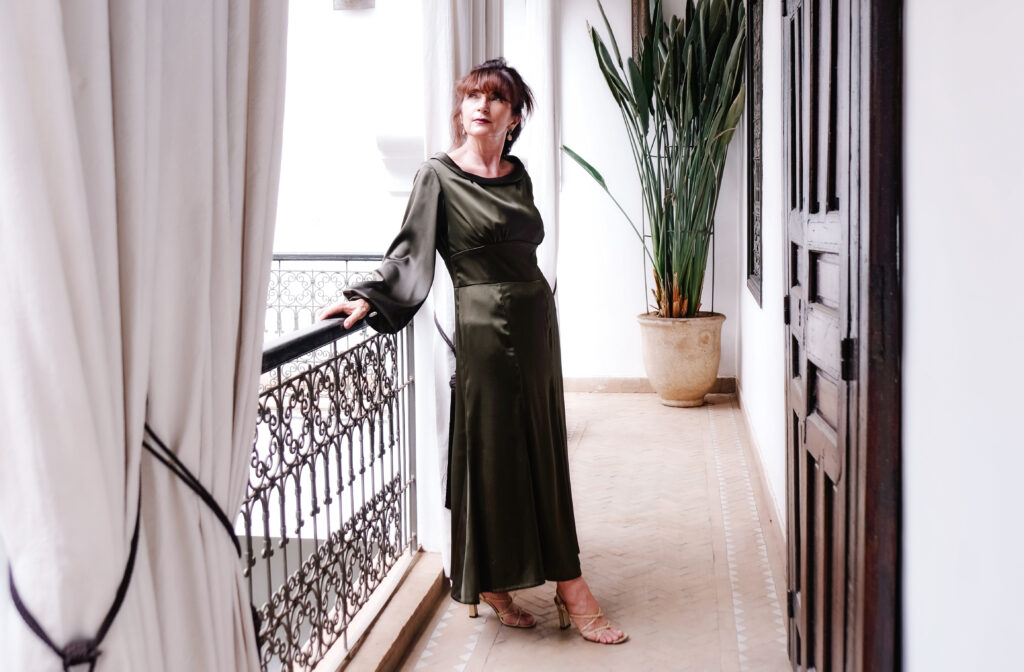
How to create 30’s glamour with Butterick B6130. I purchased this pattern soon after it was first released in 2014, and the jumpsuit caught my attention immediately. The fact that it is still in production some eleven years later, is a testament to its popularity. For some reason, I didn’t make the dress until last year, and I am only now sharing my project with you.
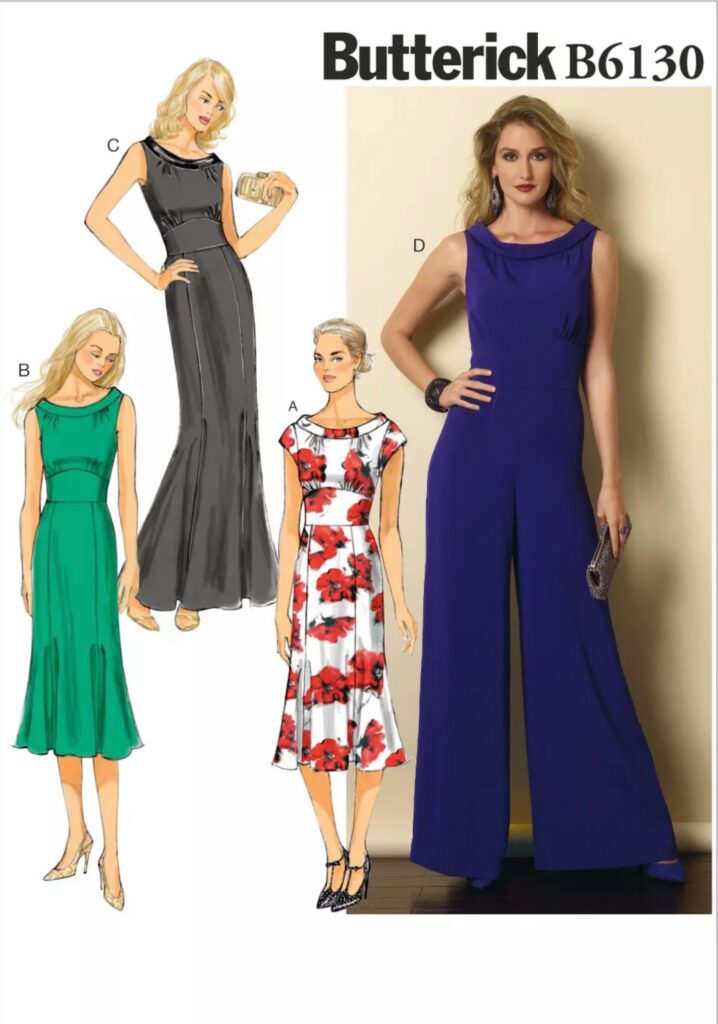
The Pattern
Dress and jumpsuit (loose-fitting through bust) have bias collar, lined bodice and midriff, and back zip. A: self-lined sleeves. A, B and C: princess seams. D: wide-legged. All are semi-fitted through the hips.
The bodice is lined, fitted at the waist, and gathered at the bust, with a flattering bias cut collar.
The pattern is easy to put together with only a few pattern pieces. It certainly has an influence and feel of the 1930s, which I love!

The Fabric
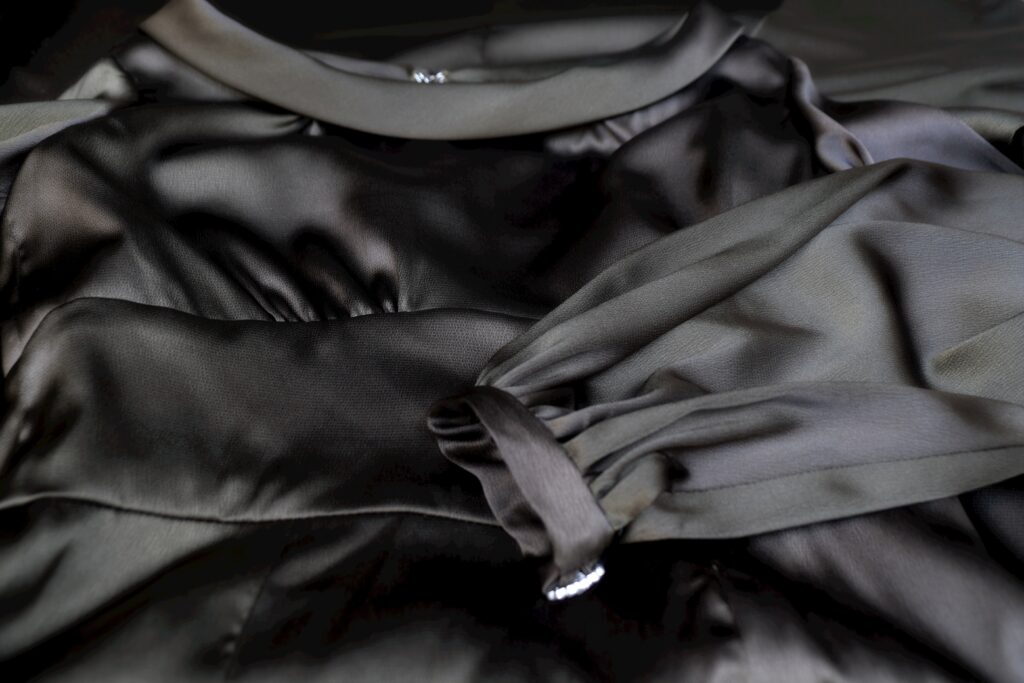
Fabric recommendations: Designed for light to medium-weight woven fabrics. Crepes, Faille, and Satins. This is not suitable for obvious diagonals.
I think it would work equally well with viscose fabric. Perhaps even a light-weight denim for a more structured dress.
I have previously made the jumpsuit using heavy jersey fabric and it was a great success. If you are making the dress with a jersey fabric, then go down a size. Omit the lining from the bodice or go up to your normal size when cutting out the lining to allow the jersey to stretch.
I used a super heavy crepe satin for the dress, it drapes beautifully, due to the weight of the fabric and the bias cut. However, it was difficult to obtain a smooth finish on the seams when the fabric was cut on the bias. It was then prone to stretching and puckering when sewn. Even so, it feels incredibly luxurious to wear, so I forgive the fabric challenges when it comes to sewing!
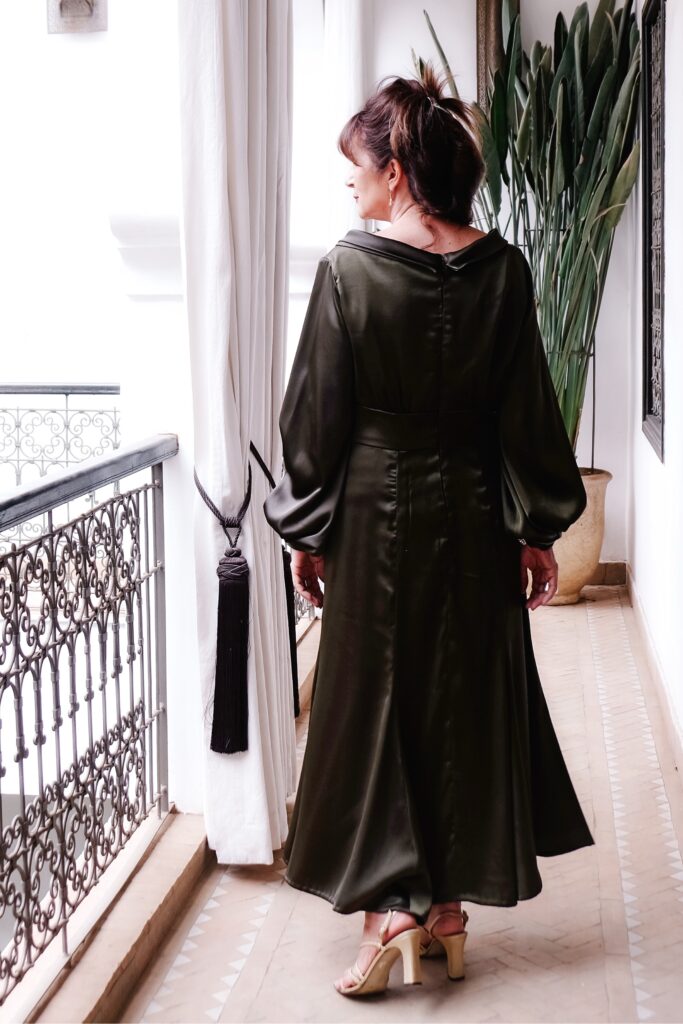
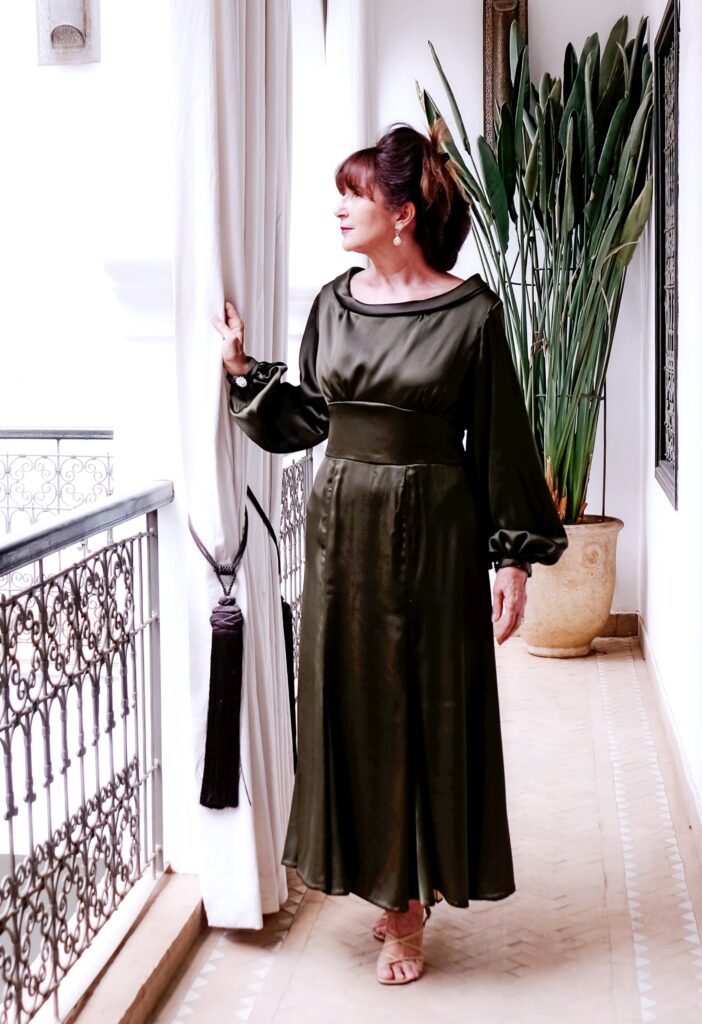
The Make
The dress comes in two lengths, below the knee and full length. I wanted to create a little 30s glamour, so I opted to cut a length that grazed my ankle.
Firstly, I serged all pattern pieces before sewing, to stabilise the fabric. The instructions were straightforward and the dress came together relatively easily.
A bias-cut collar complements the slim body of this dress, which features a fitted waist and gathered bust. I decided to use the same fabric for the bodice lining. This is worth doing if you have enough fabric to make the dress feel even more luxurious!
The skirt is constructed out of seven panels that are cut on the bias, giving it a wonderful drape quality. When joining the panels, make sure they are in the correct order and position. It is easy to mix them up, which greatly affects the drape of the skirt.
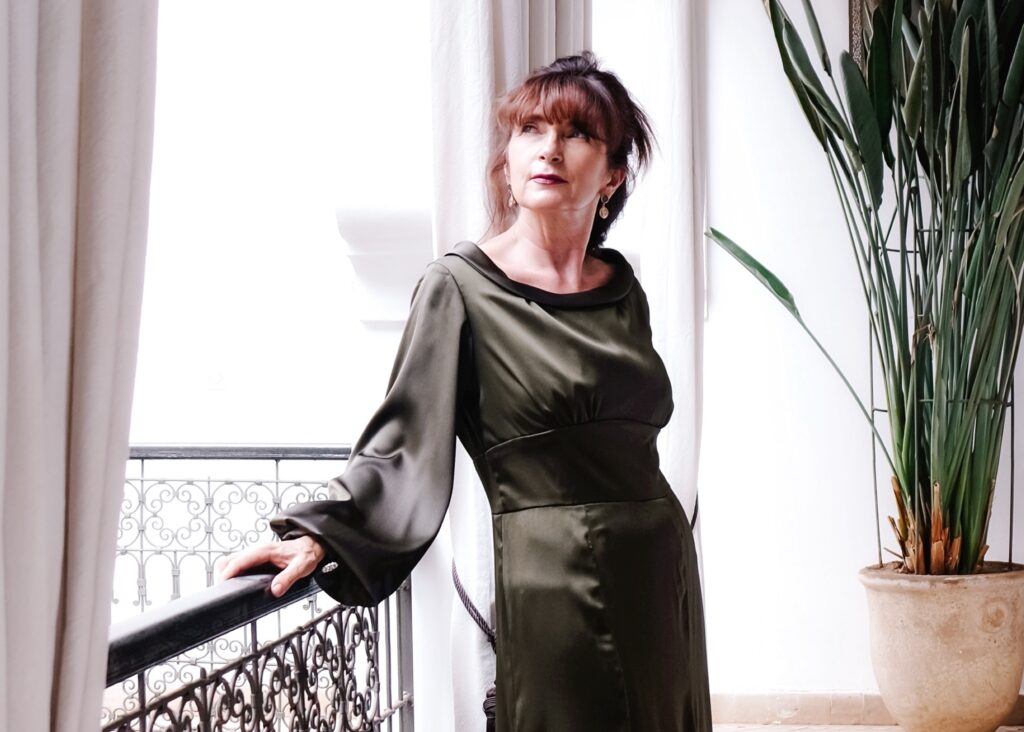
I wanted to wear this dress in cooler weather and I also prefer to cover my arms. Therefore, I chose to add a bishop sleeve to the dress, using the sleeve from the Aura wrap dress by Papercut Patterns.
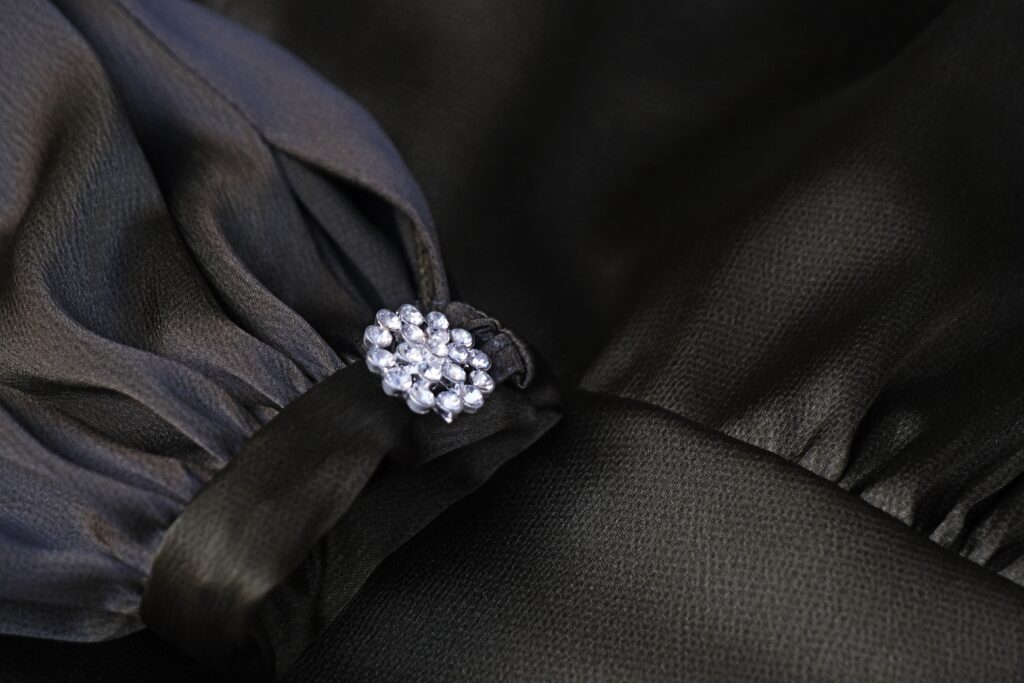
I added a touch of sparkle and evening glamour to the cuff by fixing it with a diamanté button!
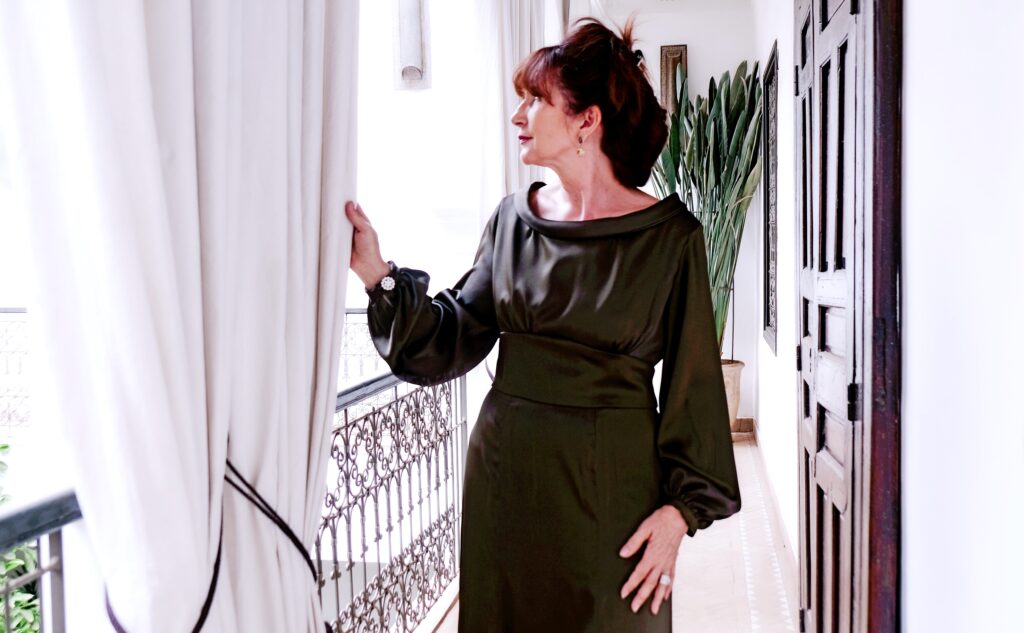
I feel that Butterick missed a trick by not adding a statement sleeve option to this pattern. If you already have this pattern, it’s worth considering because it’s easy to do. Unfortunately, the cap-sleeve is no longer flattering on my arms.
If you prefer, it would also be easy to line the skirt by attaching it to the bodice lining. This would be a good option if you were making the dress from chiffon or similar light-weight fabric.
Alterations & Tips
* I added a bishop sleeve to this dress, and I am pleased with the outcome. I think a short puff sleeve would work equally well.
I would consider fully lining the dress if it is made in velvet or lighter weight satin or chiffon.
The bias skirt could easily be adapted to a stand-alone skirt by simply adding a waistband or self-facing.
If you are making this dress in jersey fabric, please go down a size when cutting it out. Note that it is also important to cut out the lining in your usual size to ensure that the jersey can stretch.
* It may also be possible to make the dress without the zip if made in a jersey fabric, making it a ‘pull on’ style.
The dress can be easily adapted to any length.
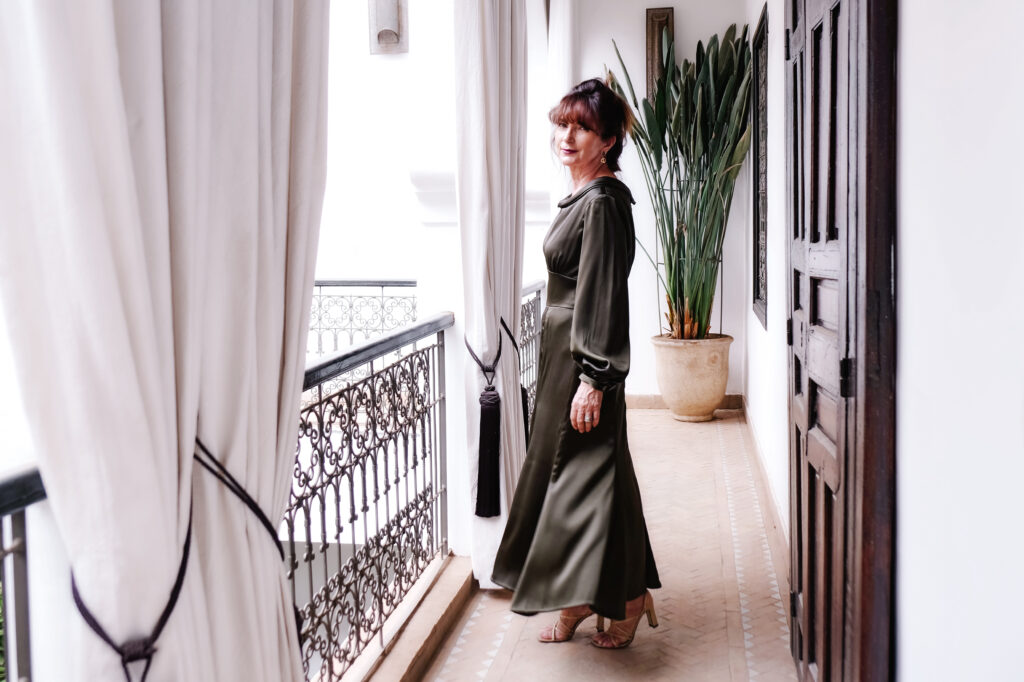
The Cost
Fabric: 125 DH
Zip & Cotton 4 DH
Buttons: 6 DH
Total: 135 DH / £10.90 / $14
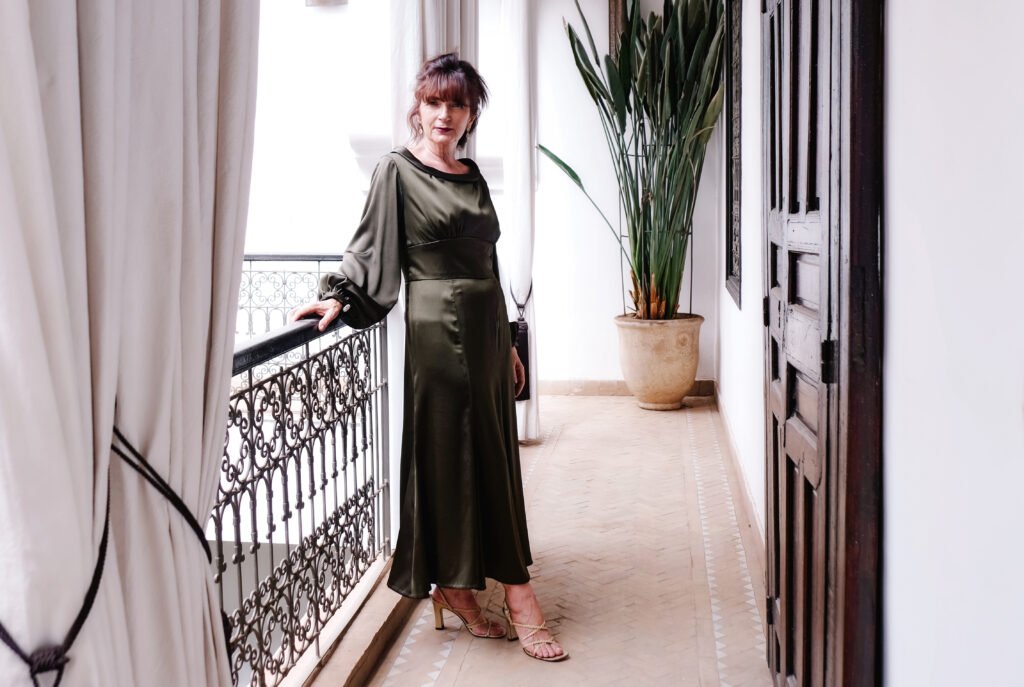
Conclusion
The dress is both feminine and romantic, with a strong 1930’s influence.
It could be made casual with the right fabric, such as a floral cotton/viscose, linen, or light weight jersey.
Personally, I feel this makes a fabulous cocktail or evening dress, and would look amazing in stretch velvet or even silk. It could also be used as a wedding or bridesmaid’s dress.
I will definitely make this dress again. It is incredibly feminine and has just the right amount of ease to make it wearable and stylish.
The outcome is something I love, and I strongly suggest this pattern to everyone. It is definitely suitable for someone with moderate sewing experience.
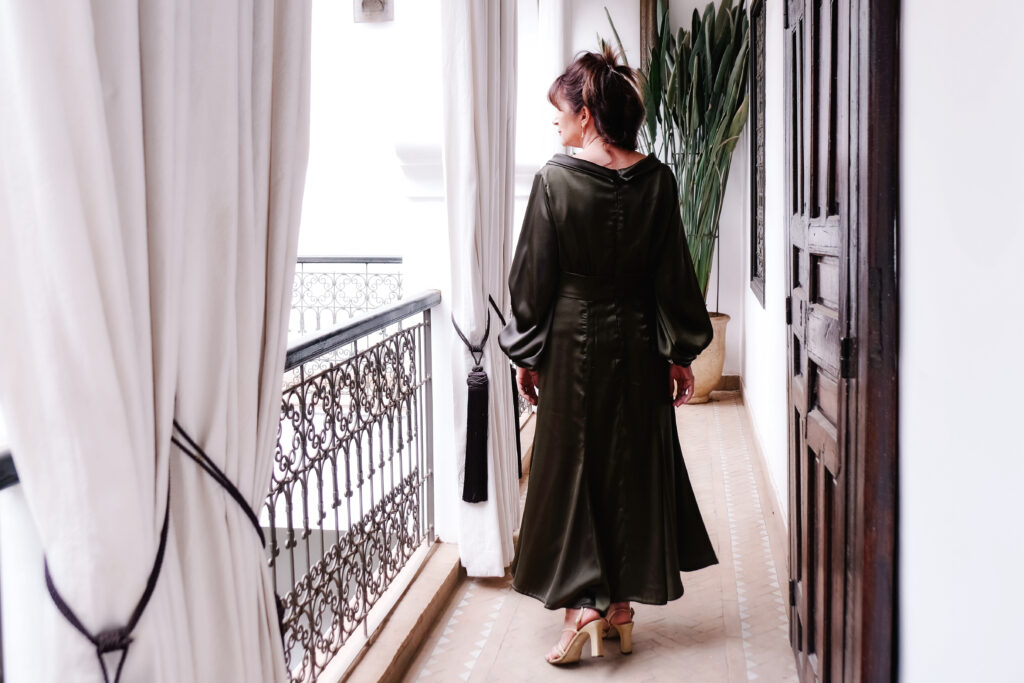
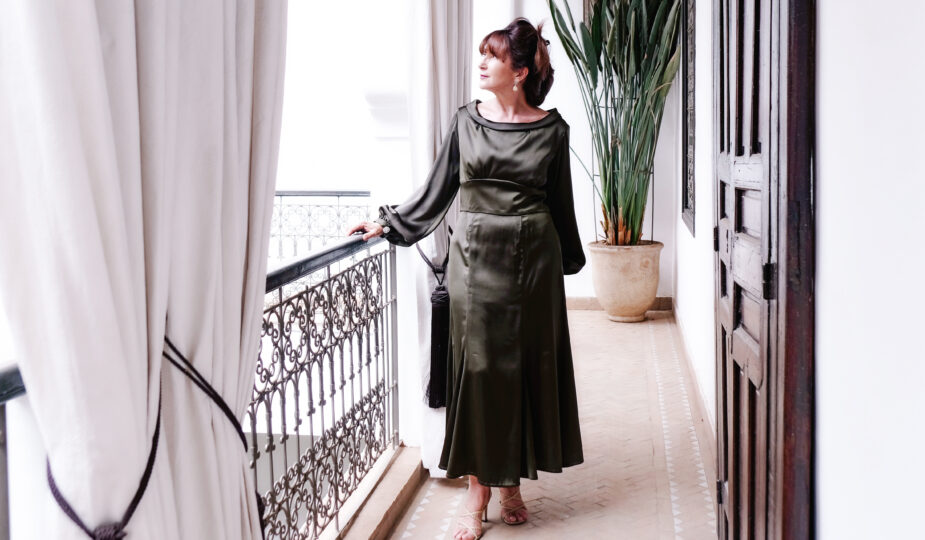

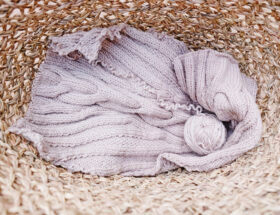
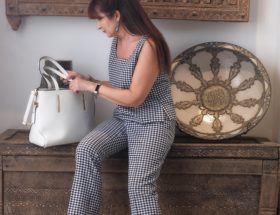
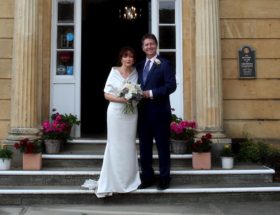
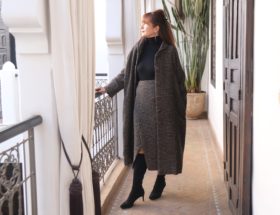
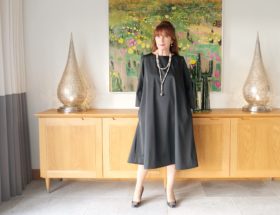
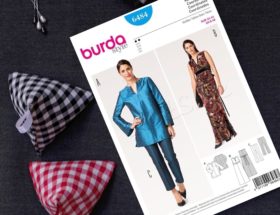
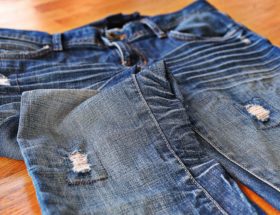

Leave a Reply